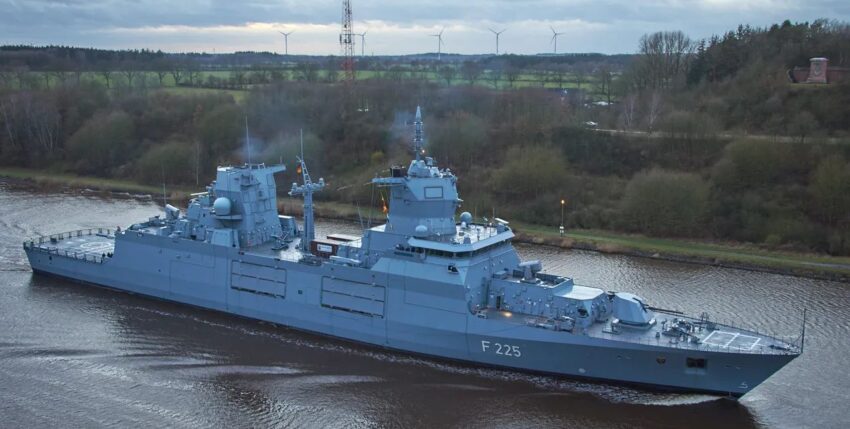On 28 January, the Federal Office of Bundeswehr Equipment, Information Technology and In-Service Support (BAAINBw) took delivery of the frigate "Rheinland-Pfalz" (F 225) from ARGE F125 (Arbeitsgemeinschaft F125), which is made up of thyssenkrupp Marine Systems (tkMS) from Kiel as the lead company and the Naval Vessels Lürssen (NVL) Group.
It will be some time before the navy puts the ship into service. In the case of the type ship "Baden-Württemberg", it took seven weeks until the "complete requirements for the operability of the ship", as it is called in official German, were met. The systems and equipment on board the "Rheinland-Pfalz" are tested during the sea trials. This includes safety checks (e.g. on launching devices, on-board cranes, pressurisation system). The special requirements for IT and communications equipment that enable the ship to participate in the armed forces' communications network will also be established. Experience has shown that the time is also used to finalise remaining points from the construction contract.
Turning onto the home straight
The press releases issued by the Koblenz authorities and tkMS to mark the occasion also state that the first F 125 class ship is scheduled to be deployed from mid-2023. As long as earlier announcements regarding the current voyage of the frigate "Bayern" are still valid, a longer stay in the Indo-Pacific region may be on the cards. With Singapore as a support harbour. In addition: mast and sheet break.
That would be more than just an experiment. Functionally conceived as a 'navy', the project is a litmus test. Because the idea behind the F 125 frigate would be put to the test for the first time. The frigates of this class were built for the Intensive utilisation This means that they should be able to remain in their theatre of operations for up to two years in order to reduce long transit journeys (from home to the theatre of operations).
In the mid-2000s, the navy embarked on a new path with intensive utilisation, which also presented the industry with new challenges. This was because the various on-board systems had to be designed and constructed for long-term operation. According to thyssenkrupp Marine Systems, around 90 per cent of the systems on board the F125 were newly developed specifically for this type of ship. Compared to earlier units, the F125 frigates have a much higher degree of automation. In addition to the individual systems developed specifically for the F125, the approximately 28,000 installed measuring points contribute to this.
This means that the long-running saga over the F 125 class frigates is slowly coming to the home straight. Good for the navy. After all, the ships are urgently needed to relieve the fleet and crews. What's more, the navy needs the experience gained in routine operations before they are actually deployed. And not just as far as the ship is concerned. The multi-crew concept with the associated training facilities will also be 'experienced'.











One Response
A beautiful, toothless tiger... a colonial cruiser.